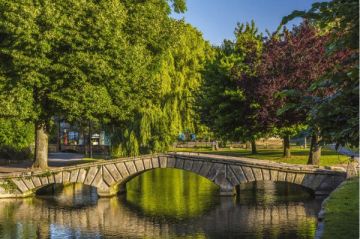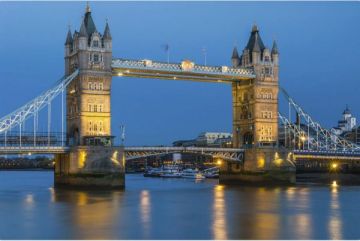About the area
Often erroneously lumped together with nearby Westminster, the Victoria district offers one of the best selections of budget and mid-range accommodation in central London. The Victoria coach and rail station is one of London's major transportation hubs, making a hotel in Victoria a convenient choice for many visitors.
Nearest major attractions to Victoria
Houses of Parliament
House of Commons, London, SW1A 0AA
The correct name of the Houses of Parliament is actually The Palace of Westminster. This extravagant neo-Gothic complex of buildings was created by Sir Charles Barry, with interiors by AW Pugin, to replace the old Palace of Westminster when it was destroyed by fire. Only Westminster Hall, the Jewel Tower, the crypt of St Stephen's Chapel, and the adjacent cloisters remain from the original medieval palace. Members of the public may tour the premises, though admission depends on whether Parliament is in session - see the Houses of Parliament website for details.
Tube: Westminster
Big Ben
House of Commons, London, SW1A 0AA
The clock tower of the Houses of Parliament is one of London's most recognizable landmarks. The monicker "Big Ben" is often used to refer to the tower as a whole, biut the name more accurately refers to the bell that tolls the hours, not the tower itself or its large clock-face.
Tube: Westminster
Buckingham Palace
The Mall, SW1A 1AA
The London residence of the reigning monarch. Open for (rather pricey) tours of the State Rooms, including the Throne Room, from early August to early October. Details at www.royal.gov.uk. Tickets from the kiosk in Green Park.
Tube: St. James Park, Green Park, or Victoria Station
Tate Britain
Millbank, SW1. Free admission
A permanent national collection of British painting, including the Turner Collection, with modern sculpture and prints, and a changing program of major exhibits (admission fee payable).
Tube: Pimlico
St James Park
A green oasis amid the bustle of London's West End, St James Park is set between The Mall and Birdcage Walk, and stretches almost to the gates of Buckingham Palace on the western end. St James was used as a deer park under Henry VIII, then it was transformed into a formal garden by Charles II, before being finally remodelled into its present relaxed state by John Nash in 1828. In the centre of the park is a lake that is home to large populations of ducks and pelicans.
Tube: St. James Park



